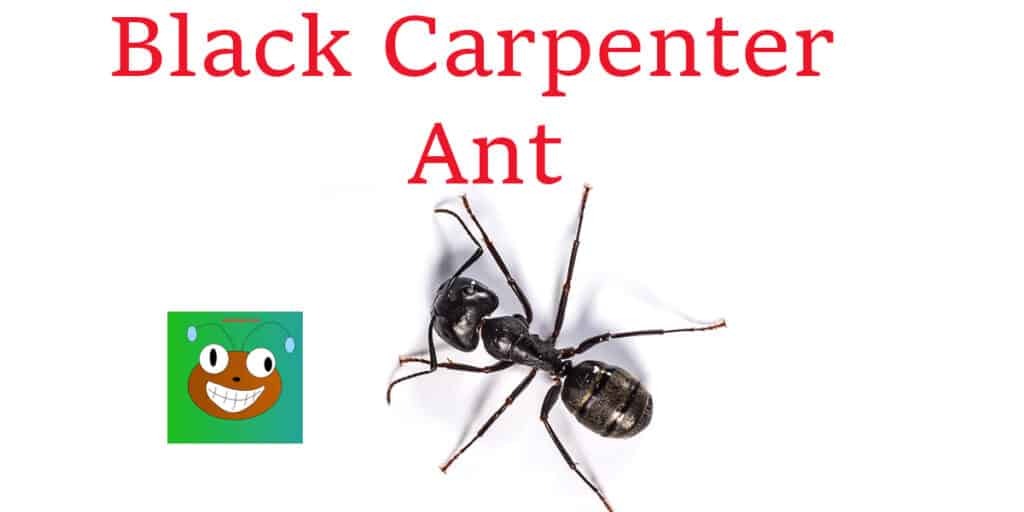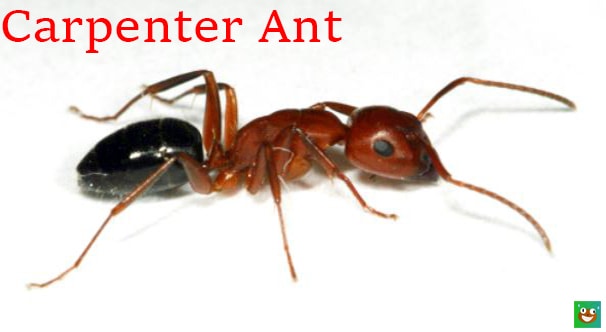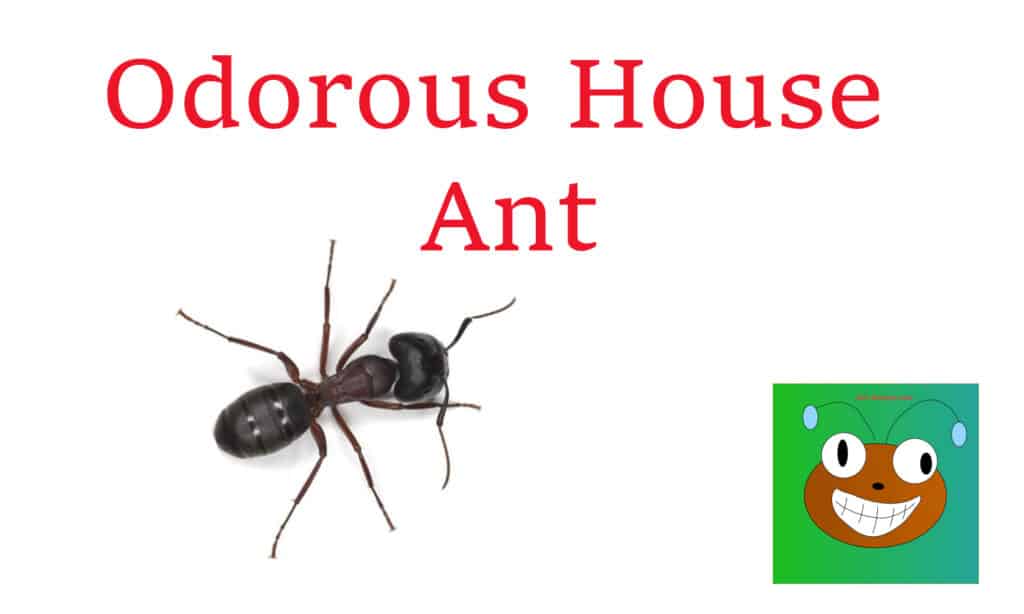Massachusetts is a state in the northeastern region of the United States, known for its rich history, picturesque landscapes, and vibrant culture.
From the cobblestone streets of Boston to the rolling hills of the Berkshires, Massachusetts offers a unique blend of urban and rural experiences.
While the state is famous for its colonial past, including the Boston Tea Party and the Battle of Bunker Hill, it is also home to world-renowned institutions such as Harvard University and the Massachusetts Institute of Technology.
To add to that, Massachusetts boasts a thriving arts scene, with numerous museums, galleries, and theaters showcasing everything from contemporary art to Shakespearean plays.
And let’s not forget about the state’s delicious seafood, particularly its famous clam chowder.
Overall, Massachusetts is a diverse and dynamic state that offers something for everyone. While all of this is nice, we can’t forget the cool ants that are in Massachusetts. These ants listed below would be perfect to start your ant-keeping journey, as they’re well-adjusted to Massachusetts’s humidity, water, and temperature!
Types Of Ants In Massachusetts
While you may not expect it, Massachusetts is loaded with ants. These include Allegheny Mound Ants, Bent-spined Acorn Ants, Black Carpenter Ants, Carpenter Ants, Citronella Ants, Cornfield Ants, Dark Rover Ants, Doubtful Acorn Ants, Hercules Ants, High Noon Ants, Immigrant Pavement Ants, Lobe-fronted Ants, Long-spined Acorn Ants, New World Black Ants, Odorous House Ants, Pale Field Ants, Punctured Ants, Rogers Crypt Ants, Schaums Acorn Ants, Silky Field Ants, Small honey Ants, Tawny Collared Ants, Tennessee Thread-waisted Ants, Texas Acorn Ants, Thief Ants, Turfgrass Ants, Uncertain Field Ants, Vampire Ants, Western Thatching Ants, and Yellow-footed Ants.
Bent-Spined Acorn Ant
Acorn ants, also called Temnothorax curvispinosus, are tiny ants found all over North America.
These ants create little colonies of around 200 individuals with various colors.
Since this genus is polygynous, the nests may have several queens. Members of this genus can range in size from 2-4 mm, whereas queens are typically 4-5 mm.
Their habitats can be discovered in plant holes, such as hollowed branches, under the bark of live trees, inside reeds, branches, logs, walnuts, coconut shells, bug galls, puffballs, and even pine needles, as well as under stones or in-ground wooded environments.
The number of queens might change depending on the colony or the weather. Pleometrosis create new nests, and fresh queens are accepted from old nests. Eight ovarioles are present in fertile queens.
These ants transport and consume seeds. They also consume microscopic bugs and lateral nectaries of broadleaf ferns.
In addition, they consume aphids on the branches of woody plants, which do not appear attractive to insects.
Eastern Black Carpenter Ant
Black carpenter ants are known to leave pheromones (scent gland) traces as they seek food at considerable distances of upwards of 100 yards (91 meters) from their nest.
They must hunt this far away from their homes because so many ants can live in a single nest.
The worker’s loud crackling noise makes it possible to identify these huge nests even in the dark.
Although the black carpenters cannot cause extreme harm, the big workers may deliver a hurtful bite.

When biting, the black carpenter ant is known to spray formic acid, making the bite hurt just a bit more.
Aphids are cared for by worker carpenter ants, who raise them. In return, the aphids spit out honeydew that the black carpenter ant enjoys and brings back to the nest.
This isn’t all they eat; as foragers, they consume plant liquids and other bugs and insects.
Black Carpenter ants build their nests in tree stumps and other types of wood. While this does promote decomposition, which is advantageous for the environment, the overall structural damage that black carpenter ants cause is extensive.
These ants are known to build nests in homes and abandoned barns, creating havoc for home owners.
Carpenter Ant
Carpenter ants got their name because they dig wood to make their nests, creating neat tunnels within the wood.
These ants will only chew and burrow through the wood to build nests; Interestingly, they do not consume wood.
Depending on the species, Carpenter ants’ length ranges from 12 to 25 mm.


Carpenter ants that are black are frequent pests, but these insects can also be all-black, all-red, or all-brown.
When mature, the black western carpenter ants colony has ten to twenty thousand workers.
Incredibly, some big colonies have more than fifty thousand ants.
In most territories, there is only one active, wingless Queen. The colony must be older than two years before the production of swarmers takes place (potential new queens).
Instead, swarmers are produced the year before and kept in the nest during winter in preparation for the ensuing years’ dispersal.
In the east of the US, swarmers arrive from May through August, whereas in the west, they appear from February till June.
Citronella Ant
The hue of citronella ants ranges from yellow to yellowish-brown. Workers vary about an inch in length, and queens can reach lengths of a little more.
If seen from the front, their segmented bodies are irregularly rounded. Citronella ants get their name due to the lemon or citrus scent they release when squashed.

Citronella ants are mostly found at night and rarely spotted during the daytime.
Citronella ants build their nests outside in damp soil near a house s base, below concrete blocks, around logs, and under dead or rotting trees.
In addition, the ants will build their nests in homes with wet spots, such as behind bathroom walls and beneath kitchen and bathroom flooring.
Honeydew secreted by insects that dwell underground and eat plant roots is the primary food source for citronella workers.
As a result, they rarely, if ever, consume food from households.
Cornfield Ant
Small, light, or dark brown, the Cornfield Ant is a common ant found outside in meadows and cornfields.
In addition to these ants mainly breeding around decaying logs or trunks, you may find eggs in the ground behind big stones, bricks, pavements, etc.
Nevertheless, the American kind is more closely related to decaying tree trunks, logs, limbs, and dense fallen leaves, as seen in forest environments (in the rainforest).
This is because there is more excellent shade. As a result, the Lawn Ant is another name that is sometimes used to classify these ants. Workers are 2.5-4mm in size, with males ranging from 3-4.5mm. The queens are usually bigger, around 4-9m.
Cornfield ants consume sweets, mainly honeydew, produced by aphids, microscopic bugs, and other insects.
Although they occasionally enter houses for nourishment, they seldom build their nests inside.
Cornfield ants are found almost everywhere in the United States, except in the far southern or southwest regions.
Some people believe the cornfield ant is the most common insect on the continent.
High Noon Ant
The high noon ant species has demonstrated positive ecological relationships with various insects or plants and typically feeds on nectar or invertebrates.
Workers of this species are 1.8 – 2.5 mm in size. This species thrives in dry environments; however, colonies can survive in hot, arid climates.
Colonies nest almost everywhere, although they favor open spaces like meadows and fields.
There is no particular diet needed for Forelius pruinosus.
Most carbohydrates, such as honey, sucrose solution, honey moisture, or sunburst ant nectar, are readily accepted.
However, forelius pruinosus consume most protein-containing foods, including fruit flies, cricket, roundworms, super worms, or discoid roaches.
Forelius pruinosus is a species that enjoys dry conditions.
The optimal humidity range for this ant species is 20–50%.
Therefore, they may survive with little moisture.
Their habitats are frequently built on loose soil.
Colonies are sometimes discovered hiding beneath cover like rocks, stumps, etc.
Long-Spined Acorn Ant
Small and brown, this ant has an 11-segmented transmitter and exceptionally well-developed propodeal spikes.
They build their nests in vegetation cavities like hollow branches, twigs, walnuts, brick walls, rocky clefts underneath the bark of dead, upright trees, and inside rotting logs; a typical nest population is around 50 workers (very low), with experimental highs seen of 419 and a total median of 136 (encompassing reproductive and brood activity).
It is worth noting that mid-July to early September is when mating flights take place. This species of ant hunts for food on the ground beneath trees.
Summertime and autumn are the busiest seasons for foraging. The ants are typically 2-4 mm in length. Depending on the habitat and season, the number of queens might change.
Only about 50% of the queens make it through the winter. Seven ovarioles are found in ovarian queens.
Workers mating does take place, and eggs produced by workers can produce male offspring.
Two ovarioles are present in reproducing workers
Odorous House Ant
The worker-odorous house ants are around 3mm long and black to dark brown.

Additionally, they have antennae that resemble a long stick.
Crushed, odorous house ants produce a pungent, rotten coconut-like stench that gives these insects their name.
Odorous house ants build their nests indoors next to moist areas, such as heaters, heater cavities along hot water pipes, under leaking fixtures, and on termite-damaged wood.
Outside, odorous ants are frequently discovered on bare soil or beneath firewood piles. Odorous house ants enjoy eating sweets and particularly enjoy consuming honeydew.
Occasionally, they eat other things, such as pet food or insects. Approximately tri-monthly, they often relocate their nests because of rain.
They create new colonies following mating flights at the end of spring and summer.
Colonies are also split by the budding process, in which a queen leaves her nest with some workers to start a new colony elsewhere.
Punctured Ant
On average, Punctured ants have longer exteriors and spikes, more extensive, rougher sculptures, less formed frontal lobes, and a small length difference between the maximum and lowest breadth (A uniform bunch!).
The shape of a queen’s skull, the sculpture’s characteristics, her body’s hue, and the pellucidity are essentially equal to those of the workforce.
The Punctured ant is commonly seen as a wood inhabitant in mostly eastern dense woodlands. However, the genus has been recognized in various woodland environments, including stands of oaks, pine, mingled pines, mixed woods, and Laurentian birch.
The ants can be around 6-12 mm in length.
Punctured ants thrive in partially open woodlands, from dry through humid climates. Tiny nests can be found in the dirt behind debris, moss, pebbles, walnuts, or sporadically in pieces of wood. The parasitic species live and prey on smaller, less advanced subspecies of ants.
They are found in tiny colonies living beneath the wood of decaying logs, old oak trees, fallen leaves, and pebbles. They forage for plant matter and non-friendly larvae.
Roger’s Crypt Ant
These ants range in color from reddish yellow to darker brown. Their mesosoma or gaster is very hairy and coarsely pierced, with their antennae having 12 segments, eventually enlarging to a ball shape. The scapes do not extend over the back of the skull.
There are two different sorts of queens, apterous and winged. Florida was where Hypoponera punctatissima was first discovered before quickly expanding to the rest of the Americas.
These ants are approximately 1/8-inch long.
Foraging larvae, as well as the ant’s colony, are typically elusive and covert.
Additionally, the ants not being active till temps reach 70 degrees adds to their enigmatic character.
Their primary food sources include arthropods and bugs – especially soil insects.
The flight ant species, Hypoponera punctatissima, reproduces by pairing non-winged males with winged females.
Silky Field Ant
Field ants have a longer bodies, ranging from 3 to 9 mm, and could be any hue, including pale yellowish, dark brown, black, or even a mix.
Their spines are segmented, and the top sides of their spines have an irregularly rounded shape.
Depending on traits, field ants are sometimes mistaken for carpenter ants. The piles of soil and other items they produce when building their nests might also be mistaken for fire ant activity.
Field ants eat honeydew and obtain this delicious material from pests such as beetles and caterpillars.
These ants consume a variety of insects. Aphids are discovered on shrubs, and workers raise aphid herds to ensure a steady honey supply.
Uniquely, beef can attract certain field ants. Foragers include a variety of field insect species. The larvae’s distinct movement is the most visible indicator of a field ant invasion.
Small Honey Ant
The little honey ant, often known as the fake honey ant, is a unique ant species. In some parts of the world, they are also called winter ants.
Workers of little honey ants are monomorphic, with their bodies being sleek and ranging from dark brown to black. Workers vary in length from 0.08 to 0.16 inches.
The Queens size is much bigger than the workers, measuring 0.28 inches.
Twelve-segmented antennas without a crossbar are used. Its petiole, the only piece of the thoracic pedicel, is highly present in this species.
The distinct mesonotum contraction separating the thin thorax into two segments makes this ant easy to identify.
These ants try to build nests indoors but many times end up making their homes outside.
The nests are typically found in the ground at slab joints, and houseplants are used to harvest whole communities.
Honey ants are tiny, tenacious, and forage along pathways.
Cakes, loaves, fruits, meats, nectar, honey, glucose, and other common household goods are just a few of the things they infect and thrive on (carbohydrates).
Thief Ant
Among the tiniest species of domestic ants is the thief ant. They received their name because they tend to build their nests near or inside those of other ant colonies, which they subsequently raid for food and eggs.
Although they can have numerous queens and thousands of workers, their colonies are typically smaller than other ant species.
While they have different traits, thief ants and pharaoh ants can frequently be mistaken.
Due to their preference for fatty meals and sweet delights, these ants are sometimes called grease ants or sugar ants.
The majority of the Eastern US is home to this species.
The bodies of thief ants range in color from light brown to pale yellow. They are usually 1.5 mm – 2.2 mm in size. Their body is irregularly shaped, with their thorax appearing to lack spines. But their waist comprises two nodes.
Turfgrass Ant
Turfgrass ants have a single point on the peduncle, the root structure connecting the stomach to the thoracic.
They are around 1/8 inch in length and dark red in appearance. Most of their nesting is constructed in the top part of the ground, with a distinctive mound concealing the openings.
The colony of every nest opening, encircled by the irregular crater-like circles of dug-up earth, may have multiple entrances.
These mounds can range in size from two to five inches. The pavement ant, sometimes called the turfgrass ant, is frequently observed on bright, well-drained grass fields in lawns, playgrounds, and golf resorts.
These ants build tiny chambered nests linked to one another and are often located in the top 12 inches of soil.
Turfgrass ants can be seen searching for food inside.
After making it through the winter, the existing and newly formed turfgrass ants start up again in late April.
By the middle of the summer, more mounds are being created. This denotes the entrance of additional adult laborers.
Finally, late summer or early fall sees the development of the young into flying females and males as matured turfgrass ant species.
Uncertain Field Ant
The Uncertain Field Ant is an ant genus discovered throughout eastern North America.
These ants have some chaetae upon the mesosoma around the tip. Although F. incerta is less shiny and has a lighter hue than F. pallidefulva, there is still a lot of variation between clusters and single specimens.
Their three dark dots upon that queen’s abdomen help to differentiate them from a queen of another species.
Like most ants, the queen is a bit bigger than the rest of the workforce.
These ants may be seen in sparse forests, forest trails, prairies, playgrounds, meadows, and highway verges.
However, they prefer grassland, fields, and hedgerows.
Thousands upon thousands of ants live in a nest with their eggs, larvae, and adults, ranging range from 6-9mm.
F. incerta consumes various foods, and their foragers hunt for nectar from extrafloral calyx on plants, including partridge beans and sunflowers.
Additionally, they collect honey from insects and grasshoppers and guard their food supply against parasitoids, ants that are not nestmates, and other insect species.
Western Thatching Ant
Western thatching ants have a single hump, known as a petiole, amid their thoracic region.
In the nest, there is a variety of colors and sizes.
Individuals can have heads of 0.94 – 2.1 mm in diameter and 4.0 – 7.5 mm in length.
Western thatching ants create colonies in dry areas, including alpine meadows, prairies, pine woods, beaches, and parched fields with sage or bougainvillea ecosystems.
Their nests are frequently located on secondary successional soil – ground that has undergone disturbance from an incident like a fire.
Western thatching ants are Omnivores and obtain their nutrition from the deceased or weakened invertebrates (such as crickets and bugs) they find when foraging.
Their foraging distance can be up to 70 ft from their nest.
Usually, two or more flightless females deposit eggs in a colony.
However, given that one colony was discovered to have 198 queens, the number of queens present varies significantly.
Pale Field Ant
Pale field ants derive their name from their preference for outdoor habitation, venturing indoors only occasionally in search of sweet foods.
Generally, treatment is not necessary when small quantities are found indoors, as these ants don’t typically nest near or beneath structures.
However, if field ants swarm outdoor homes during the summer, they can cause significant damage to gardens and lawns.
Field ants are also known to bite when their colonies are disturbed, causing unpleasant stings. Some species even release acid during these attacks, intensifying the pain.
Adult ants reach sizes ranging from 1/8 to 3/8 of an inch in length. Mating begins early in the colonies, often as early as April.
In Florida, males gather near nest openings at dusk. Across the species, individuals are commonly attracted to light, unlike flying queens. Actual mating flights tend to occur in the mornings, even though males are frequently drawn to light during dusk.
Tawny Collared Ant
Tawny collared ants inhabit mesic woodlands and meadows, often serving as temporary hosts for members of other species.
Their habitats can be found beneath rocks, wood, and trees. The ant’s distinctive mesonotum shape, which rises abruptly and much higher than the level of the pedicles, sets it apart from other genera. At first glance, this may appear like two large nodules. However, this structure is essentially a centrally convex welt.
These ants typically measure between 23 and 25.5 cm (9.1 to 10 in) in length.
The identification of Aphaenogaster fulva is based on the propodeum spikes pointing skyward at the anterior margin of the pedicles, well above the mesonotum. These features resemble those of Aphaenogaster Humphreys, but differ in having larger eyes and rear tibial spurs.
Additionally, the color of the final four papillae segments is lighter. These ants play a crucial role in the dispersal of herbaceous seed plants, particularly those of bloodroot, violet, and trillium.
Texas Acorn Ant
The Texas acorn ant, a small yellow species prevalent in Eastern America, is distinguishable by its 11-segmented antennae and notably long, internally bent, and closely spaced propodeal spines. This species is found across Eastern America, from Maine and Eastern North Dakota, south to Central Florida and the eastern half of Texas.
Their nests can be found in various plant cavities such as hollow branches, underneath the bark of live trees, within grasses, twigs, wood, acorns, coconut shells, insect galls, fruiting bodies, and pine needles. They also nest under boulders or in the soil in wooded regions.
In queenright colonies, the worker ants reproduce. Each nest typically houses between 80 and 100 workers along with a few queens. The ants are usually about 1/8 inches long. The Texas acorn ant feeds on honeydew from tree or plant leaves but does not seem to consume aphids directly.
The ants also transport seeds, suggesting they likely consume at least some of these. Additionally, they consume dead insects such as cherry ants or brown ants found in the axillary calyx of broadleaf ferns.
